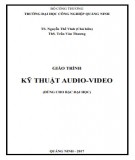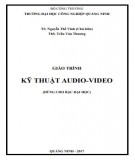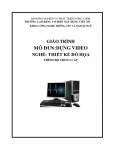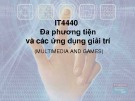Nguyễn Công Phương
DIGITAL IMAGE PROCESSING
Edge Detection
Contents
Introduction to Image Processing & Matlab Image Acquisition, Types, & File I/O Image Arithmetic
Image Transform Spatial & Frequency Domain Filter Design Image Restoration & Blind Deconvolution
Binary Image Processing Image Encryption & Watermarking Image Classification & Segmentation
I. II. III. IV. Affine & Logical Operations, Distortions, & Noise in Images V. VI. VII. VIII. Image Compression IX. Edge Detection X. XI. XII. XIII. Image – Based Object Tracking XIV. Face Recognition XV. Soft Computing in Image Processing
sites.google.com/site/ncpdhbkhn 2
Edge Detection
1. Introduction 2. The Sobel Operator 3. The Prewitt Operator 4. The Canny Operator 5. The Zero-Crossing Detector 6. The Unsharp Filter
sites.google.com/site/ncpdhbkhn 3
Introduction
• In some applications, only certain areas of interest are isolated to be processed for further stages of processing edge detection.
• Edge: a sudden change of intensity in an image. • In binary image, an edge corresponds to a sudden
change in intensity level to 1 from 0, & vice versa.
• Too many edges represent a “rough” image. • Too few would correspond to a relatively
“smoother” image.
sites.google.com/site/ncpdhbkhn 4
Edge Detection
1. Introduction 2. The Sobel Operator 3. The Prewitt Operator 4. The Canny Operator 5. The Zero-Crossing Detector 6. The Unsharp Filter
sites.google.com/site/ncpdhbkhn 5
The Sobel Operator
• It performs a 2D spatial gradient measurement on an image and emphasizes regions of high spatial frequency that correspond to edges. • Typically, it is used to find the approximate
absolute gradient magnitude at each point in an input grayscale image.
sites.google.com/site/ncpdhbkhn 6
Edge Detection
1. Introduction 2. The Sobel Operator 3. The Prewitt Operator 4. The Canny Operator 5. The Zero-Crossing Detector 6. The Unsharp Filter
sites.google.com/site/ncpdhbkhn 7
The Prewitt Operator
• Works in a very similar way to the Sobel
operator.
• But uses slightly different kernels.
sites.google.com/site/ncpdhbkhn 8
Edge Detection
1. Introduction 2. The Sobel Operator 3. The Prewitt Operator 4. The Canny Operator 5. The Zero-Crossing Detector 6. The Unsharp Filter
sites.google.com/site/ncpdhbkhn 9
The Canny Operator
• It produces as output an image showing the positions of tracked intensity discontinuities.
sites.google.com/site/ncpdhbkhn 10
Edge Detection
1. Introduction 2. The Sobel Operator 3. The Prewitt Operator 4. The Canny Operator 5. The Zero-Crossing Detector 6. The Unsharp Filter
sites.google.com/site/ncpdhbkhn 11
The Zero-Crossing Detector
• The zero-crossing detector looks for places in the Laplacian of an image where the value of the Laplacian passes through zero, that is, points where the Laplacian changes sign.
sites.google.com/site/ncpdhbkhn 12
Edge Detection
1. Introduction 2. The Sobel Operator 3. The Prewitt Operator 4. The Canny Operator 5. The Zero-Crossing Detector 6. The Unsharp Filter
sites.google.com/site/ncpdhbkhn 13
The Unsharp Filter
• It enhances edges (and other high-frequency components in an image) via a procedure that subtracts an unsharp, or smoothed, version of an image from the original image.
• The unsharp filtering technique is commonly
used in the photographic and printing industries.
sites.google.com/site/ncpdhbkhn 14


























